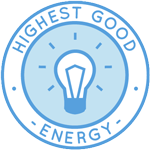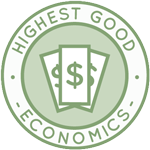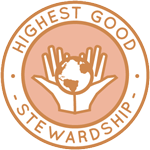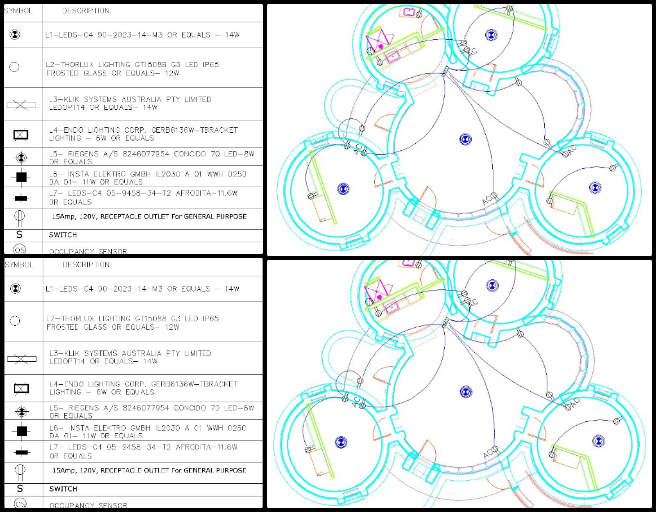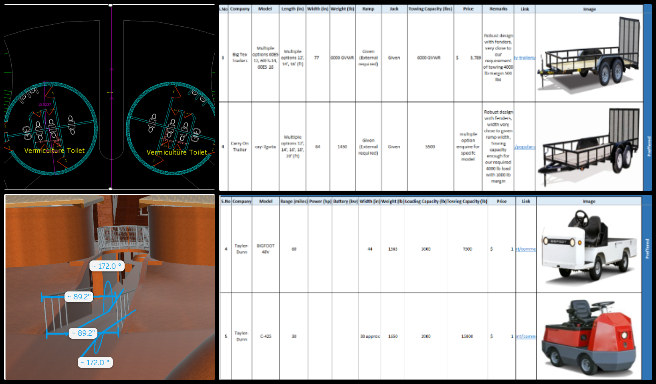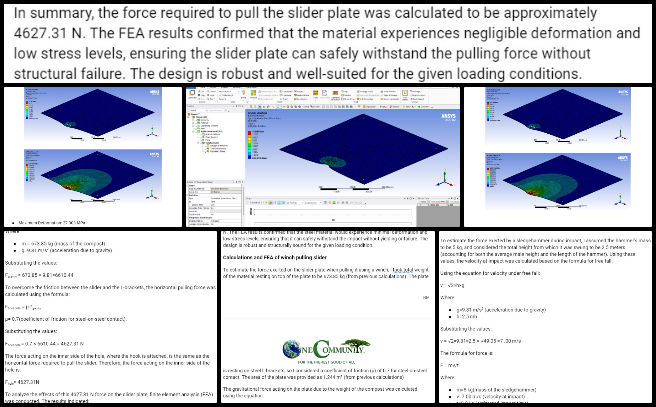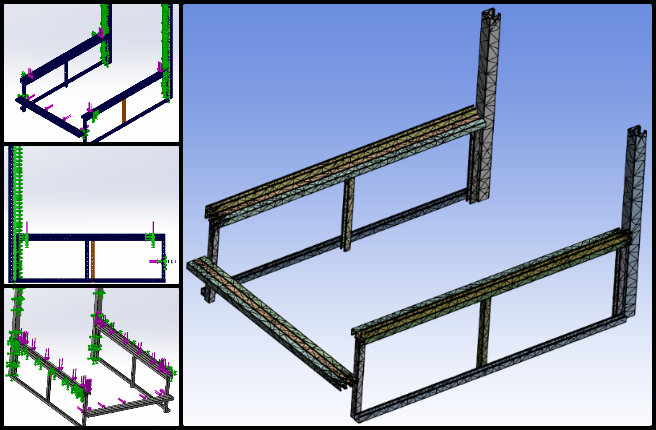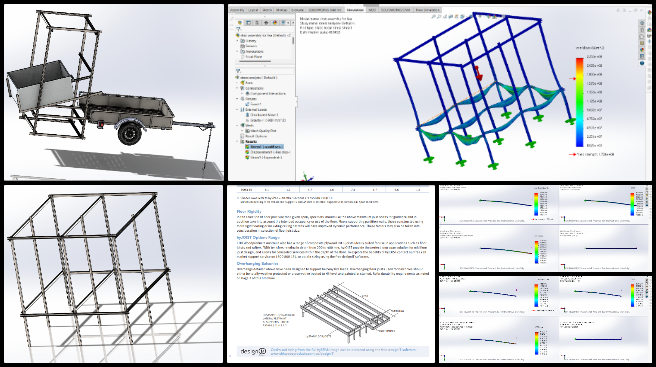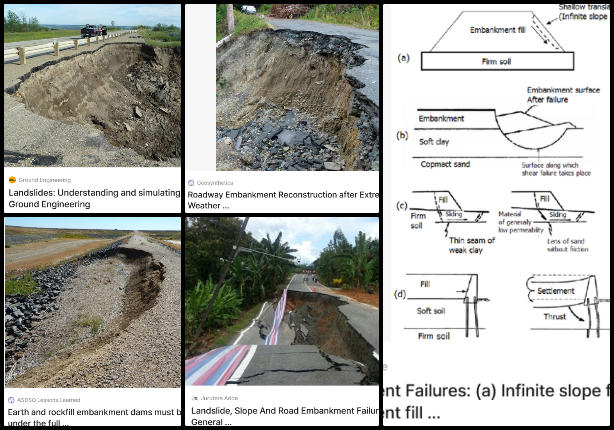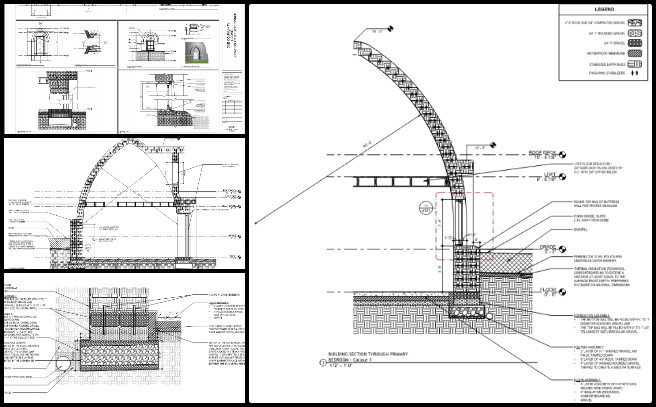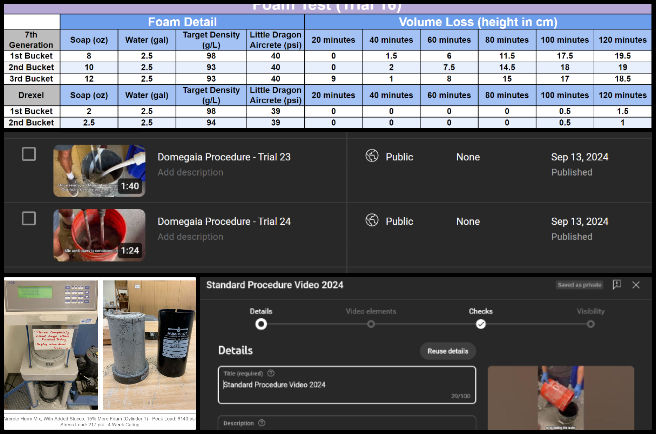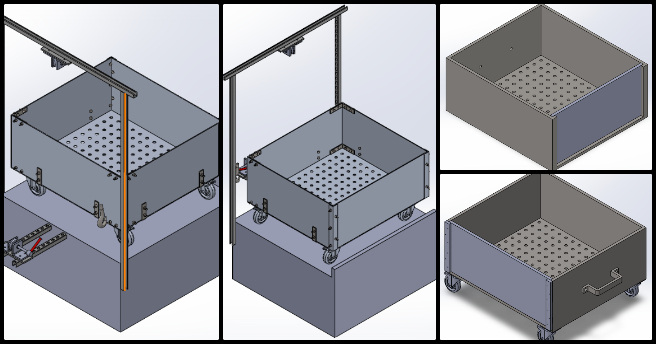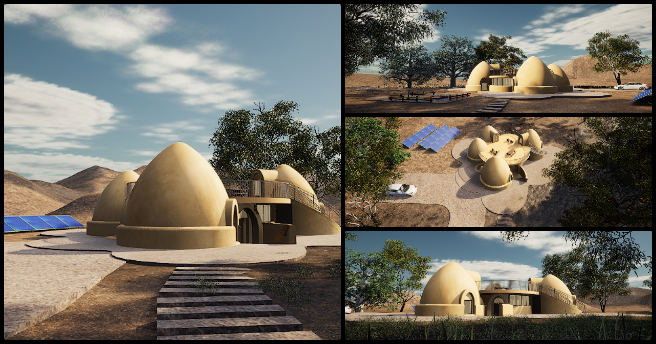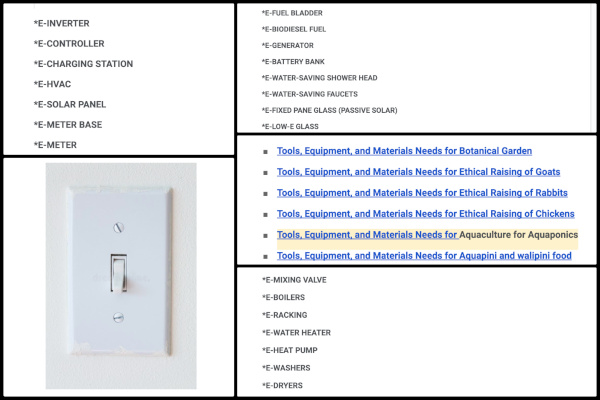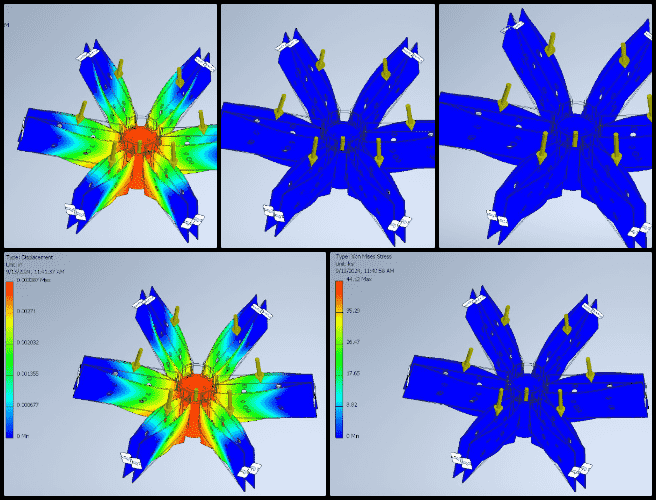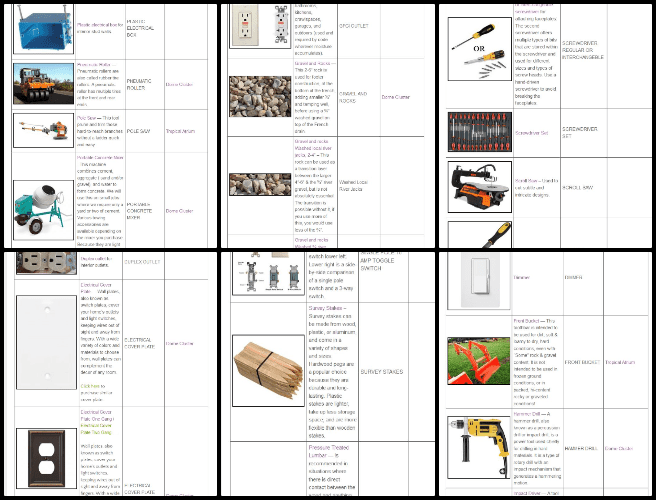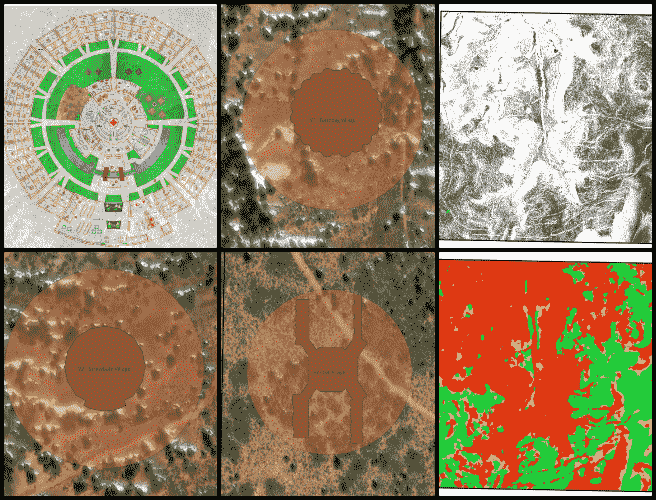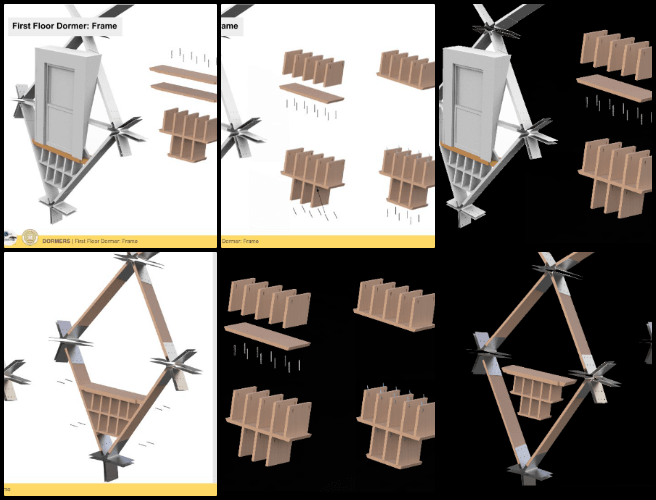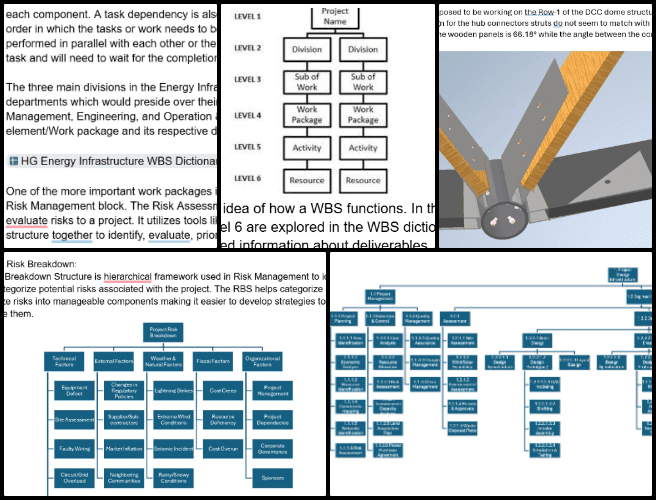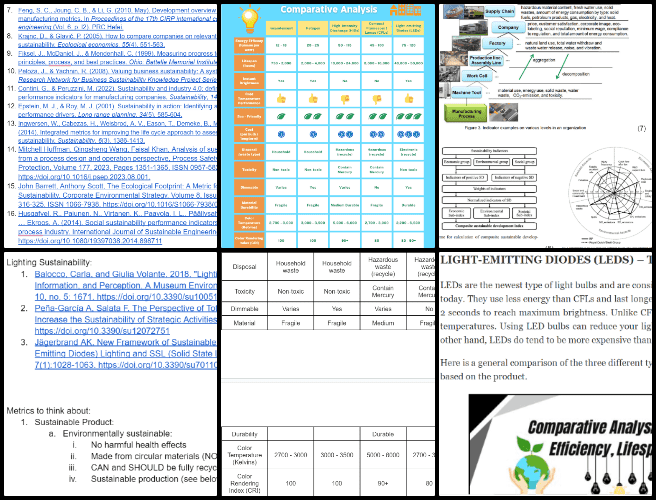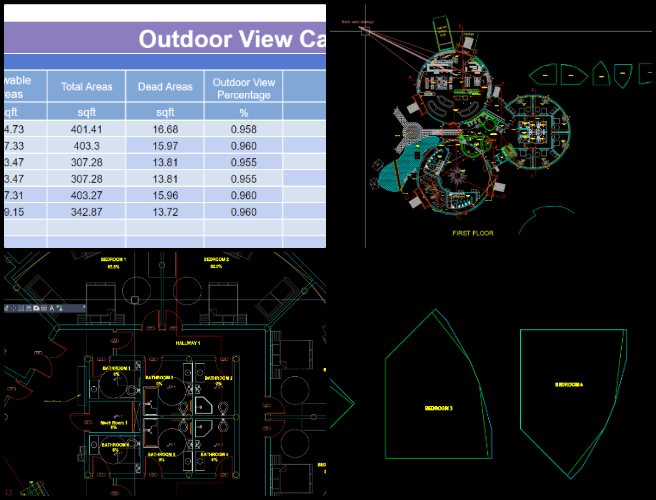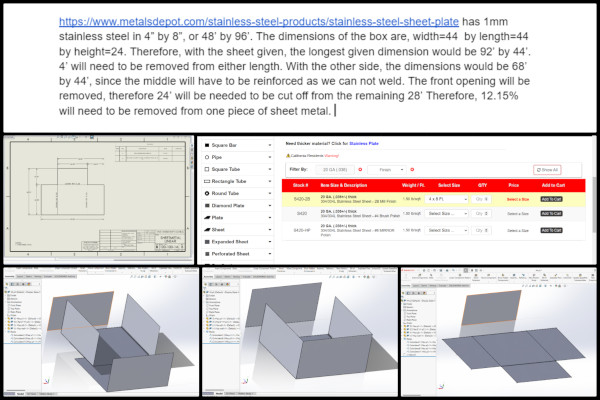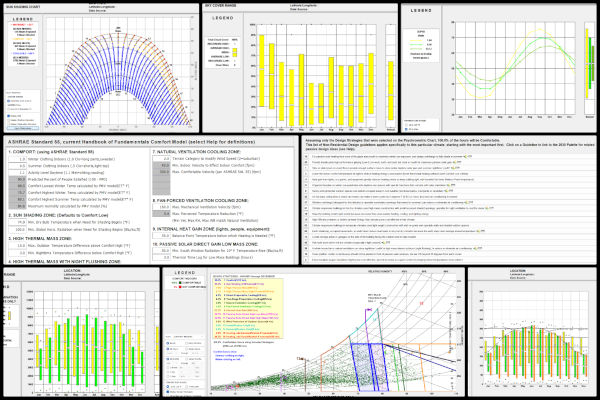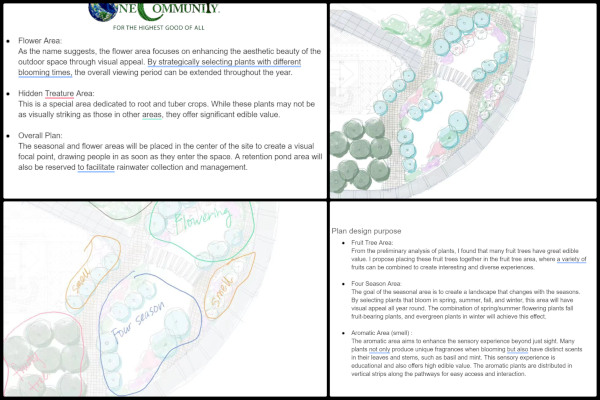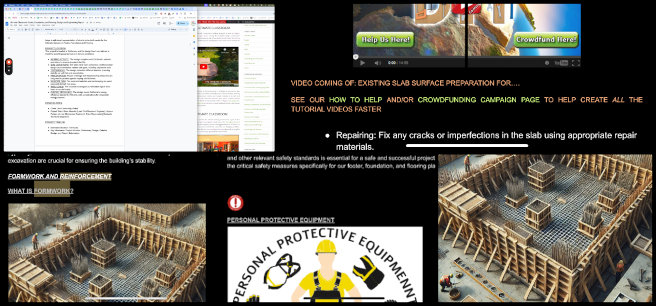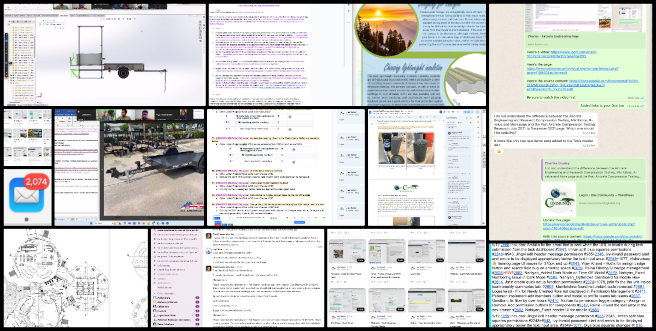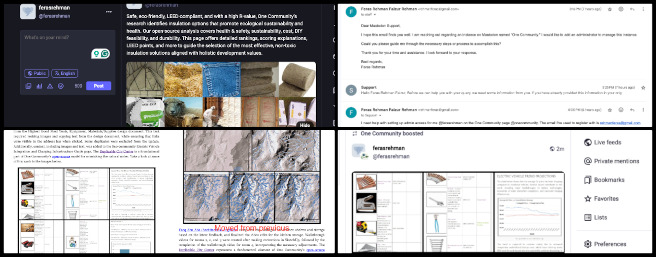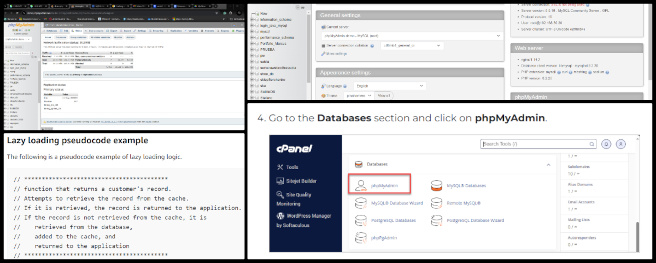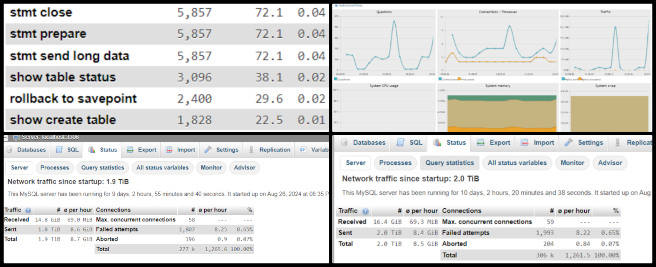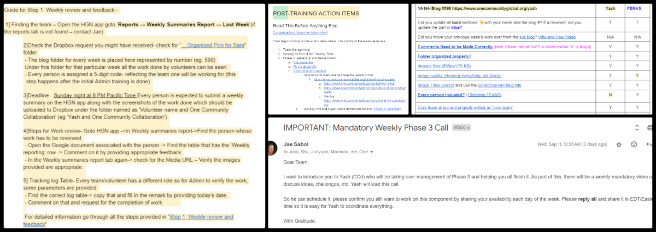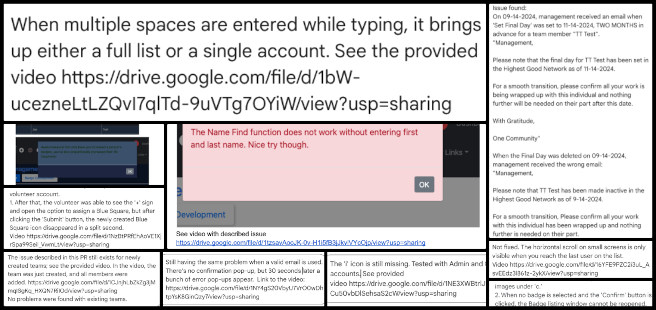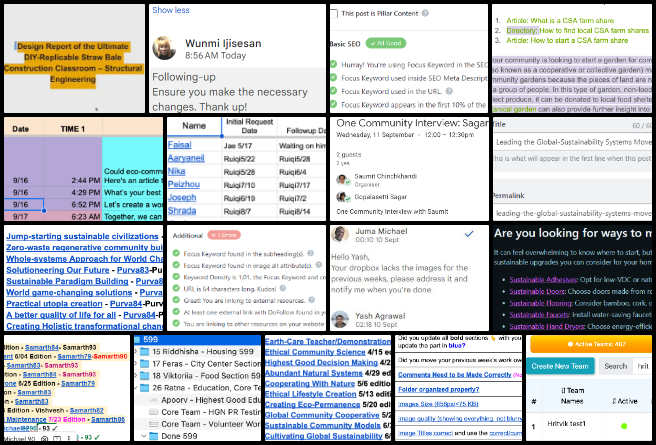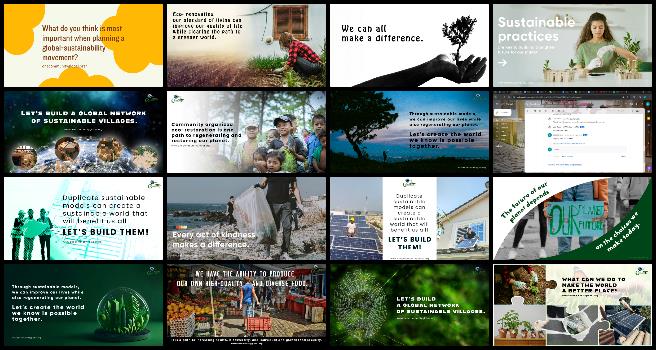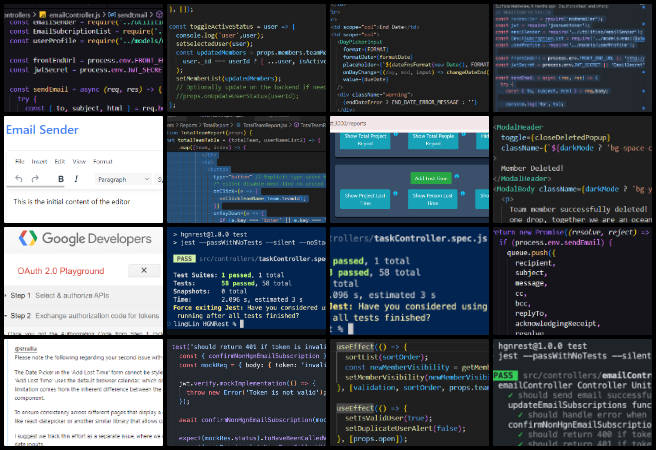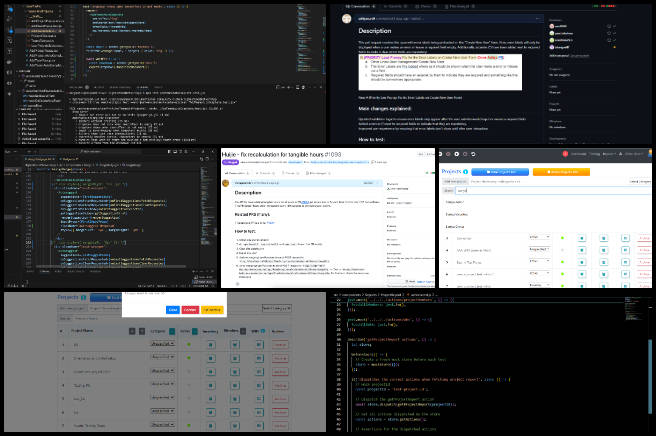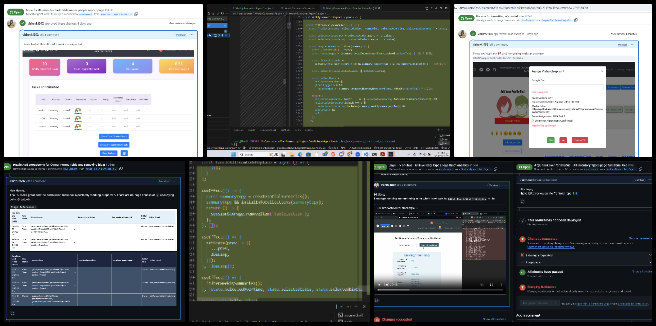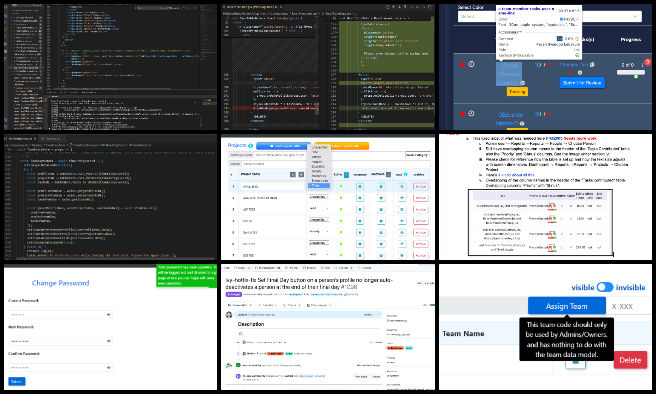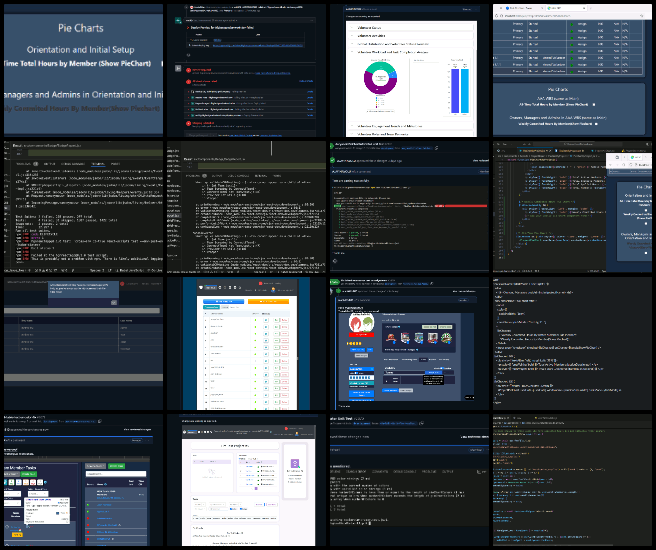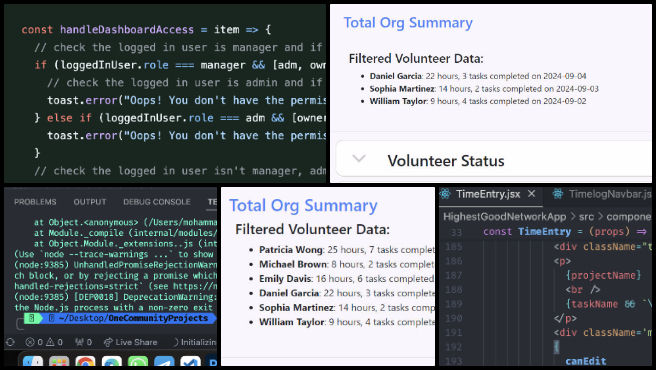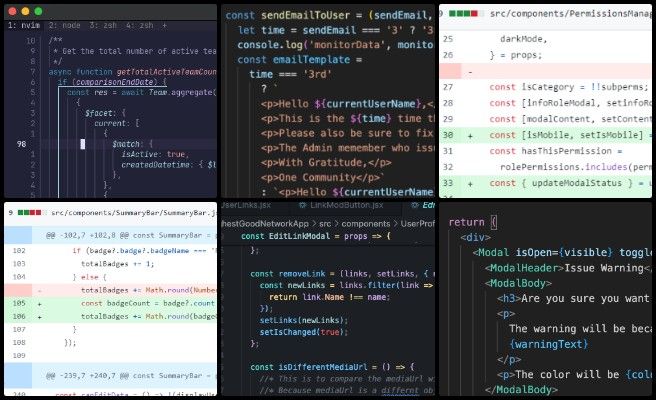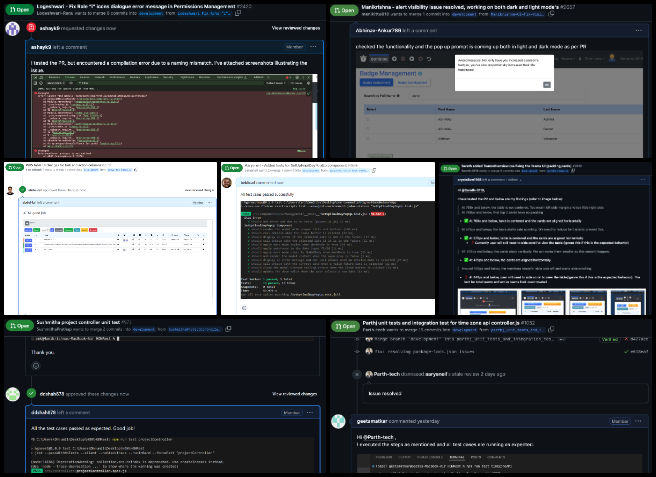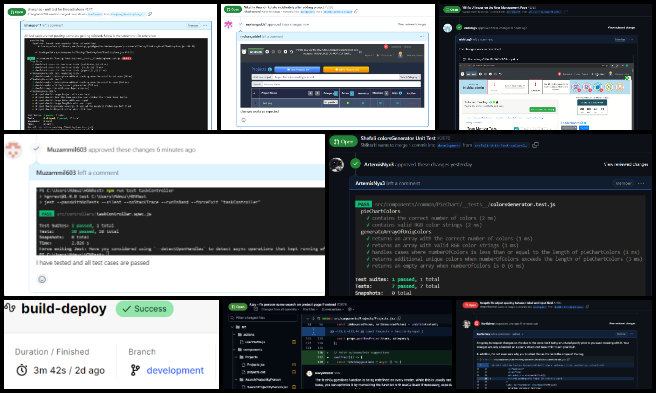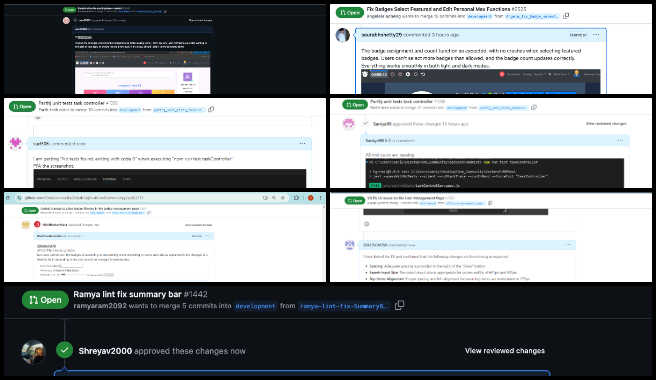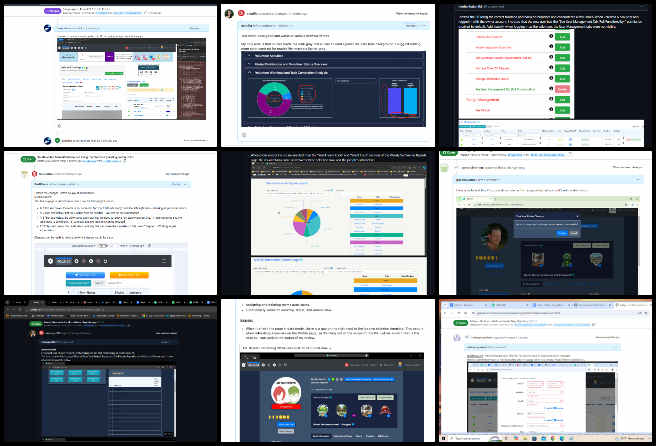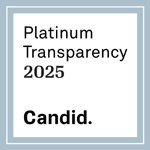Global Zonal Master Planning – One Community Weekly Progress Update #600
At One Community, we are dedicated to pioneering global zonal master planning by integrating sustainable approaches to food, energy, housing, education, and economics. Our all-volunteer team is creating a self-replicating model that supports fulfilled living and global stewardship practices. Through open sourcing and free sharing every aspect of our work, we aim to establish a global network of teacher/demonstration hubs focused on regenerating our planet and evolving sustainability for “The Highest Good of All“.
- Here’s our project overview
- Here’s our world-change methodology
- Here’s how this becomes self-replicating
- Here’s how we are open source and free-sharing all the do-it-yourself designs
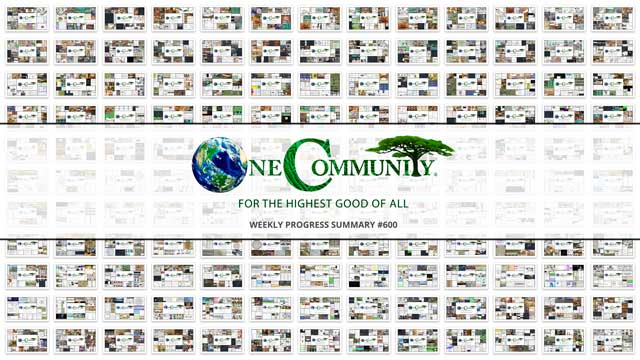
OUR MAIN OPEN SOURCE HUBS
Click on each icon to be taken to the corresponding Highest Good hub page.
One Community’s physical location will forward this movement as the first of many self-replicating teacher/demonstration communities, villages, and cities to be built around the world. This is the September 16th, 2024 edition (#600) of our weekly progress update detailing our team’s development and accomplishments:
Global Zonal Master Planning
One Community Progress Update #600
DONATE | COLLABORATE | HELP WITH LARGE-SCALE FUNDING
CLICK HERE IF YOU’D LIKE TO RECEIVE AN EMAIL EACH WEEK WHEN WE RELEASE A NEW UPDATE
YOU CAN ALSO JOIN US THROUGH SOCIAL MEDIA
ONE COMMUNITY WEEKLY UPDATE DETAILS
HIGHEST GOOD HOUSING PROGRESS
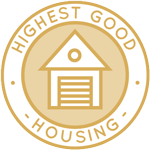 One Community is pioneering global zonal master planning through Highest Good housing that is artistic and beautiful, more affordable, more space efficient, lasts longer, DIY buildable, and constructed with healthy and sustainable materials:
One Community is pioneering global zonal master planning through Highest Good housing that is artistic and beautiful, more affordable, more space efficient, lasts longer, DIY buildable, and constructed with healthy and sustainable materials:
- Learn about how we are pioneering global zonal master planning: Our Upcoming Crowdfunding Campaign
- Learn about the different village models: 7 Sustainable Village Models
- Visit the open source portals for the first two: Earthbag Village OS Hub | Straw Bale Village OS Hub
This week, Adefola Madehin (Electrical Design Specialist) continued his work with Earthbag Village designs. Fola completed the socket and panel layout for the Earthbag Village project. Receptacles were placed in the bedrooms, bathroom, and living room, while the distribution panel was installed in the living room on the first floor. The air-conditioning sockets were connected directly to the panel, each with its own breaker. The ring circuits were connected in a loop, each also with its own breaker. The Earthbag Village is the first of 7 to be built as the housing component of One Community’s open source model for pioneering global zonal master planning. The work helps One community’s mission of global zonal master planning and reinforces our commitment to a better living quality for all people. See some of his work in the collage below.
Adil (Engineer) continued working on Vermiculture Toilet designs. Adil explored additional options for electric utility vehicles and trailers, focusing on their suitability for specific applications. The architecture of a Earthbag village design was studied to determine the ramp dimensions, including its length, width, and angle of incline, in order to assess the required capacity and dimensions for both the vehicle and trailer while accounting for space constraints. Calculations were made to determine the power needed for the vehicle to tow a load on an incline, taking into consideration the forces acting on the trailer and vehicle. All options for trailers and vehicles were organized into a table with key specifications for easier comparison. This model aims to offer sustainable solutions that not only address waste processing but also enhance living standards by pioneering global zonal master planning. See below for some of the pictures related to this work.
Anil Karathra (Mechanical Engineer) continued working on Vermiculture Toilet designs. Anil reviewed and verified all calculations in the vermiculture calculations spreadsheet, researched temperature, humidity, and ventilation requirements for vermicomposting, and participated in the weekly team meeting, creating an action item list for the coming week. He modified the slider to add holes and ground edges, reviewed previous calculations for hammering the slider in, with FEA pending. He also took part in team management by reviewing tasks, tracking weekly targets, and notifying team members accordingly. Anil worked with Adil to update the task list, discussed new tasks, and conducted FEA analysis on the updated slider design. Additionally, he performed calculations and FEA for pulling the slider out and worked on related documentation. This model aims to offer sustainable solutions that not only address waste processing but also enhance living standards by pioneering global zonal master planning. The approach of pioneering global zonal master planning enables the development of innovative solutions that are both environmentally friendly and effective. See below for some of the pictures related to this work.
Joseph Osayande (Mechanical Engineer) continued helping finish the Vermiculture Toilet engineering and design details. Joseph focused on the Finite Element Analysis (FEA) of the waste removal stand, examining the forces acting on the entire system and identifying areas of weakness that need to be addressed. The Vermiculture Removal design was redone due to issues with the positioning of certain features. To mitigate inaccuracies, smaller assemblies were created, and some features were suppressed to obtain a clearer sample of the anticipated results. This model aims to offer sustainable solutions that not only address waste processing but also enhance living standards by pioneering global zonal master planning. See below for some of the pictures related to this work.
Karthik Pillai (Volunteer Mechanical Engineer) continued helping finish the Vermiculture Toilet engineering and design details. Karthik’s primary focus was on rebuilding the structure of a vermiculture toilet using Unistrut, alongside conducting finite element analysis (FEA) to assess its performance. During this process, he observed notable differences between C-section Unistrut and the standard Unistrut structure, which influenced the outcomes of the analysis and highlighted the need for further investigation. In parallel, Karthik worked on the 4-dome cluster roof project, where he initially attempted to construct the roof using Unistruts. However, challenges with this approach arose, leading him to consider alternative materials for iterations. The Earthbag Village is the first of 7 to be built as the housing component of One Community’s open source model for pioneering global zonal master planning. See some of his work in the collage below.
Loza Ayehutsega (Civil Engineer/Assistant Civil Engineer) completed another week working on the Earth Dam risk assessment and dam break hazard assessment. Loza focused on embankment slope failure. Dam embankment slope failures are critical safety concerns that can arise from various factors, including hydraulic conditions, structural defects, and external loading. These incidents can lead to catastrophic consequences, highlighting the need for meticulous design, monitoring, and intervention strategies. Dam embankment slope failure is characterized as a significant threat to the integrity and safety of the dam, often manifesting as circular or wedge-shaped sliding events known as “slides” or “slumps.” Slope failures can develop with little warning and can rapidly escalate to complete dam failure, posing a serious risk to life and property. Ensuring dam safety measures and preparedness are a foundation of One Community’s open source earthworks as part of pioneering global zonal master planning. See the pictures below for examples related to her work.
Michaela Silva (Architect) continued working on finalizing the interior of the Earthbag Village 4-dome home design. Michaela focused on refining the construction documents by developing wall sections with detailed earth bag information and creating enlarged details for windows and doors. She also prepared an expanded footing and foundation section. Additionally, she advanced the base stair details while working to balance structural requirements with maximizing storage space. She began saving images for a step by step build document for the closet stair. The Earthbag village is the first of 7 villages to be built as part of One Community’s open source model for pioneering global zonal master planning. See her work in the collage below.
Tad Matlock (Environmental Science Student) continued working on Aircrete Compression Testing. Tad continued to finalize the new Aircrete webpage. He updated a past team’s table containing foaming agent comparisons and added pictures, captions, and clarification to the final testing trial summary section. While adding to the main document, he began uploading useful mixing trial videos to Youtube, so they can be embedded into the webpage easily. These aircrete tests contribute to the housing aspect of One Community’s open source model for pioneering global zonal master planning. See below for some of the images related to his work.
Yagyansh Maheshwari (Mechanical Engineer) continued helping finish the Vermiculture Toilet engineering and design details. Yagyansh worked on designing methods for efficiently dumping compost on the ground. He made modifications to the drawer, adjusting its size to a square shape and updating its materials in SolidWorks. Additionally, Yagyansh shifted the wheel assembly slightly inward to accommodate the new disposal method. He also explored options for transferring the drawer to the dumping site while ensuring it met the required weight capacity. The Earthbag Village is the first of 7 to be built as the housing component of One Community’s open source model for pioneering global zonal master planning. See some of his work in the collage below.
Yuxing Xu (VFX Artist) continued working on making videos for the Earthbag Village 4-dome home design. Yuxing worked on the 4-dome home video flyover and walkthrough, focusing on the interior and exterior camera paths. He set up camera animation in Blender by designing the camera paths and animating camera targets to clearly represent the building and environment, with particular attention to the transition from exterior to interior to enhance viewer experience. Yuxing also tested outside camera paths, including a turnover movement for bird’s-eye view shots. Additionally, he further developed the hard surface ground for the site. The Earthbag Village is the first of 7 to be built as the housing component of One Community’s open source model for pioneering global zonal master planning. See some of his work in the collage below.
DUPLICABLE CITY CENTER PROGRESS
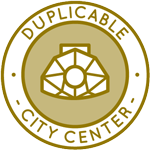 One Community is pioneering global zonal master planning through a Duplicable and Sustainable City Center that is LEED Platinum certified/Sustainable, can feed 200 people at a time, provide laundry for over 300 people, is beautiful, spacious, and saves resources, money, and space:
One Community is pioneering global zonal master planning through a Duplicable and Sustainable City Center that is LEED Platinum certified/Sustainable, can feed 200 people at a time, provide laundry for over 300 people, is beautiful, spacious, and saves resources, money, and space:
- Learn about this building and it’s function: Duplicable City Center Open Source Hub
This week, the core team continued their research on the Highest Good Energy. They removed the bulkier items from the Highest Good Energy Tools, Equipment, Materials/Supplies list and continued with the expansion of the list with additional tools, equipment, and materials. New additions included wire nuts, dimmer switches, toggle switches, and outlets, all twenty amp items and accompanied by photos. One Community’s open-source initiative for pioneering global zonal master planning includes the Duplicable City Center as a central component. See the images of this work below.
Arnob Mutsuddi (Mechanical Engineer) continued working on Duplicable City Center structural engineering model and details. He worked on a new iteration for a 3000lbs load on the hub connector was initiated to perform a failure analysis, which was later completed with a stress value of 26ksi. An iteration for a 5000lbs load on the hub connector was also started, yielding a stress result of 44.12ksi, exceeding the allowable stress of 36.26ksi. An iteration for a 4000lbs load on the hub connector failed, prompting plans for mesh optimization to address the failure. The iteration for the 4000lbs load was completed to further understand the FMEA. The Duplicable City Center is a foundational part of One Community’s open-source model, which excels in pioneering global zonal master planning. This approach is integral to their mission of pioneering global zonal master planning through innovative and scalable solutions. See some of this work in the pictures below.
Charles Gooley (Web Designer) continued working on the Transition Food Self-sufficiency Plan. He added additional tools and equipment from the Highest Good Food Tools, Equipment, Materials/Supplies design document and the Earthbag Construction Dome-Home Electrical Systems pages to the Tools and Equipment for Open Source Construction master page, ensuring that links are displayed correctly in the address bar when clicked. The process involved resizing images and copying text from the design document. Some duplicates were excluded. The Duplicable City Center is a foundational part of One Community’s open-source model for pioneering global zonal master planning. Take a look at some of this work in the images below.
Chris Blair (GIS Technician/Horticulturist) continued working with GIS data as part of One Community’s Permaculture Design that includes the location of the Duplicable City Center. He continued learning how to use QGIS, an open-source GIS software, with the goal of recreating his previous work from proprietary software to improve future access to the data. He processed and visualized slope data for the property and analyzed optimal locations for solar potential. He also experimented with formatting and adding DWG files to QGIS, as well as digitizing and georeferencing blueprints for the villages. Within One Community’s open-source framework, the Duplicable City Center plays a central role in pioneering global zonal master planning. The images below showcase some of this work.
Nika Gavran (Industrial Designer) continued her work on the Duplicable City Center dormer window installation plans. She focused on expanding the final document for the dormer window instructions, incorporating feedback on the previously completed slides. She removed shadows from images, improved the layout, and worked on the overall graphic design of the dimensions. Nika assigned letter and number codes to each piece of wood for easier identification in the instructions and added material lists alongside the assembly slides. As a foundational component of One Community’s open-source strategy, the Duplicable City Center is designed for pioneering global zonal master planning. The images below showcase some of this work.
Panambur Rachan Rao (Project Manager) continued work on reviewing and organizing everything related to wrapping up the Highest Good Energy component. He updated the Work Breakdown Structure on Google Docs to reflect recent project changes, making tasks and responsibilities clearer. The Risk Assessment was enhanced with a Project Risk Breakdown Structure and a Risk Matrix, which visually represents the potential risks and their impacts, making it easier to understand and prioritize them. Additionally, Rachan coordinated with the DCC analysis team to gather and incorporate their weekly task updates, ensuring that all current activities and progress are accurately reflected and integrated into the overall project plan. Within One Community’s open-source framework, the Duplicable City Center plays a central role in pioneering global zonal master planning. Take a look at some of this work in the images below.
Vika Zakharova (Administrative Assistant) continued helping as part of the hiring team, training team, and conducting research for the Most Sustainable Lightbulbs and Light Bulb Companies page. She expanded her research on sustainable lightbulbs, reviewing 20 scientific papers to gather information on sustainable lighting and manufacturer metrics. Vika also began reviewing the current sustainable lightbulb webpage and updated the comparison chart for lightbulb types by adding categories such as dimmability, material durability, color temperature, and color rendering index. In her administrative role, Vika published her first official blog entry along with a revised version. Additionally, she interviewed a volunteer candidate for One Community and scheduled two more interviews for the next week. The Duplicable City Center represents a fundamental element of One Community’s open-source approach, dedicated to pioneering global zonal master planning. View examples of this work in the pictures provided below.
Yancong E (Architectural Designer) continued working on the Duplicable City Center project. He inquired with Jae about the schedule for LEED lighting tasks and the improvement plan for Room #12 rendering. Yancong also started the Outdoor View Calculation for each room and completed the detailed View Calculation percentage for the living dome on the first floor. The Duplicable City Center represents a fundamental element of One Community’s open-source approach, dedicated to pioneering global zonal master planning. This innovative initiative aims to showcase how pioneering global zonal master planning can transform urban spaces into more sustainable and community-oriented environments. You can see examples of this work in the following images.
HIGHEST GOOD FOOD PROGRESS
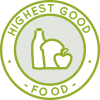 One Community is pioneering global zonal master planning through Highest Good food that is more diverse, more nutritious, locally grown and sustainable, and part of our open source botanical garden model to support and share bio-diversity:
One Community is pioneering global zonal master planning through Highest Good food that is more diverse, more nutritious, locally grown and sustainable, and part of our open source botanical garden model to support and share bio-diversity:
- Learn about the structures: Hoop House Hub | Aquapini & Walipini Open Source Hub
- See what we’ll be growing and pioneering global zonal master planning: Gardens & Hoop Houses | Large-scale Structures | Food Forest | TA
This week, Hayley Rosario (Sustainability Research Assistant) continued her work on the Vermiculture Toilet component that will produce compost as part of the Highest Good Food project. She worked on waste management and reduction solutions for the vermiculture drawer. She focused on determining the most efficient method to construct a 44 by 44 by 24-inch drawer while adhering to specification requirements, without the use of a full piece of sheet metal due to size limitations. Hayley documented the details of her work in a report and supplemented the report with relevant models and drawings. The Highest Good Food initiative is a key component of One Community’s open source plans, dedicated to pioneering global zonal master planning. This approach is critical to pioneering global zonal master planning and ensures alignment with the initiative’s goals. See her work in the collage below.
Jay Nair (BIM Designer) continued working on Aquapini and Walipini Planting and Harvesting lighting and HVAC design. He focused on refining and integrating analyses using Climate Consultant and EDGE Buildings software for the Walipini project. The primary goal was to make the complex environmental data accessible to a broader audience by incorporating explanations into the project document. Additionally, the integration of the EDGE Buildings analysis began, with initial steps including familiarizing with the software’s functionality and inputting relevant data. Steps were taken to resolve issues and align the project with its sustainability objectives. The Highest Good Food initiative is a key component of One Community’s open source plans, dedicated to pioneering global zonal master planning, and exemplifies the organization’s commitment to pioneering global zonal master planning through innovative design and implementation. Below are some of the images showcasing this work.
Ziyi Chen (Landscape Designer) continued working on the design of the outdoor spaces for the Aquapini and Walipini Planting and Harvesting structures. She worked on the graphic design for the outdoor spaces of the Aquapini and Walipini structures. The design includes an enclosed open space divided into five distinct areas: a fruit tree area, an aromatic area, a four seasons area, a root area, and a flower area. Each section features specific plant configurations to align with its theme. The design also incorporates a retention pond at the center of the site, with a wooden boardwalk crossing over it, providing access to the four seasons and flower areas for closer viewing within the space. The Highest Good Food initiative is a key component of One Community’s open source plans, dedicated to pioneering global zonal master planning. See her work in the collage below.
HIGHEST GOOD EDUCATION PROGRESS
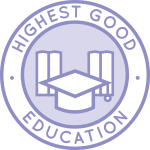 One Community is pioneering global zonal master planning through Highest Good education that is for all ages, applicable in any environment, adaptable to individual needs, far exceeds traditional education standards, and more fun for both the teachers and the students. This component of One Community is about 95% complete with only the Open Source School Licensing and Ultimate Classroom construction and assembly details remaining to be finished. With over 8 years of work invested in the process, the sections below are all complete until we move onto the property and continue the development and open sourcing process with teachers and students – a development process that is built directly into the structure of the education program and everything else we’re creating too:
One Community is pioneering global zonal master planning through Highest Good education that is for all ages, applicable in any environment, adaptable to individual needs, far exceeds traditional education standards, and more fun for both the teachers and the students. This component of One Community is about 95% complete with only the Open Source School Licensing and Ultimate Classroom construction and assembly details remaining to be finished. With over 8 years of work invested in the process, the sections below are all complete until we move onto the property and continue the development and open sourcing process with teachers and students – a development process that is built directly into the structure of the education program and everything else we’re creating too:
- Program Overview: Education Open Source Hub
- How the components work together: How to use the Education for Life Program
- Lesson Plans for Life – Lesson Plans How-to
- Foundations of Outstanding Leaders, Teachers, and Communicators
- Curriculum for Life
- Teaching Strategies for Life
- Learning Tools and Toys for Life
- Evaluation and Evolution
This week, Apoorv Pandey (Mechanical Engineer) continued helping with the engineering details for the Ultimate Classroom part of the Highest Good Education component. He continued working on the second draft of the Structural Engineering Report for the Ultimate Classroom Project. He focused on formatting the report to ensure it was easily understandable by both engineers and laypersons, explaining each section such as the introduction and project scope clearly. Apoorv used other published pages on One Community’s website as references to guide his work. The One Community model of combining forward-thinking education with sustainably built classrooms like this is an excellent example of pioneering global zonal master planning. This approach truly exemplifies pioneering global zonal master planning by creating environments that foster collaboration and innovation. See the collage below for his work.
Brian Mwoyowatidi (Graduate Structural Engineer) continued helping with the engineering details for the Ultimate Classroom part of the Highest Good Education component. He focused on revising the Ultimate Classroom Footer, Foundation and Flooring Design Tutorial, and Engineering Report based on feedback received. He began to work on the second draft, incorporating additional information and ideas for the open-source project. This included backing up relevant resources as PDFs, adding quick access links for convenience, improving document spacing, and creating an AI-generated image for the Formwork section. The One Community model of combining forward-thinking education with sustainably built classrooms like this is an excellent example of pioneering global zonal master planning. See the collage below for his work.
HIGHEST GOOD SOCIETY PROGRESS
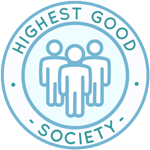 One Community is pioneering global zonal master planning through a Highest Good society approach to living that is founded on fulfilled living, the study of meeting human needs, Community, and making a difference in the world:
One Community is pioneering global zonal master planning through a Highest Good society approach to living that is founded on fulfilled living, the study of meeting human needs, Community, and making a difference in the world:
- Read the Highest Good society overview: Highest Good Society
- Learn about the model for fulfilled living and sharing: A Day in the Life
- Learn about the 4 economic models: RBE | For-profit | Non-profit | Entrepreneurship
- Learn about our open source community collaboration and management software: The Highest Good Network
This week, the core team completed over 69 hours managing One Community’s volunteer-work review not included above, emails, social media accounts, web development, new bug identification and bug-fix integration for the Highest Good Network software, and interviewing and getting set up new volunteer team members. They also shot and incorporated the video above that talks about pioneering global zonal master planning and how pioneering global zonal master planning is a foundation of the bigger picture of everything One Community is doing. The image below shows some of this work.
Feras Rehman (Data Analyst) completed his part of the One Community Updates Blog and collages, provided comments on the admins’ feedback for Yash’s training work, and re-reviewed Yash’s work. He researched Mastodon’s social media strategies and admin account setup, created content for scheduled Mastodon posts using Buffer from September 14th to 19th, and posted six toots on Mastodon. Additionally, he corrected mistakes pointed out by Sara and Jae on the admin tracking document and social media document. This work helps One Community’s mission of pioneering global zonal master planning. The following images show his work for the week.
Masoom Ahmed Siddique (Senior Network Engineer) worked on the server optimization review and focused on adjusting configurations to support an improved database structure and enhanced security protocols. Key actions included optimizing indexes, streamlining query execution, and implementing advanced caching strategies to reduce server load and improve data retrieval speeds. The performance evaluation showed increased efficiency and reduced response times. Routine backups were also confirmed to function properly with the new database setup. Ongoing efforts include refining configurations based on real-time data and user feedback to ensure continuous performance improvements and system reliability in the Bluehost environment. This work helps One Community’s mission of pioneering global zonal master planning. The following images show his work for the week.
Praneeth Kruthiventi (Data Analyst) focused on researching Google Ads, with an emphasis on optimizing bid strategies and responsive search ads. He also assisted new volunteers by reviewing their training exercises and providing feedback. In addition, he interviewed one candidate for the role of a front-end developer and scheduled interviews. He began working on tasks related to SEO optimization. This work helps One Community’s mission of pioneering global zonal master planning. The following images show his work for the week.
Shireen Kayal (Humanitarian Program Developer & Data Manager) created an updated version of the One Community weekly progress video. She curated pertinent footage, removed superfluous stock materials, and integrated additional content from One Community’s provided resources. The resulting video is designed to highlight the diverse and impactful work of One Community, effectively conveying the organization’s mission and goals to a broader audience. This work helps One Community’s mission of pioneering global zonal master planning. The following images show her work for the week.
Vatsal Mendpara (Security Analyst) reviewed system and network logs on the Bluehost server, identifying issues related to performance and connectivity. He collaborated with the team to address the ongoing problem of server downtime and explored potential solutions to mitigate outages. The work involved troubleshooting, analyzing logs, and discussing strategies to improve server stability. This work helps One Community’s mission of pioneering global zonal master planning. The following images show his work for the week, further reflecting his commitment to pioneering global zonal master planning in every aspect.
Venkata Jaya Pavan Naru (Network and Cybersecurity Engineer) actively monitored a Bluehost website for issues, particularly spikes in CPU usage. He addressed Cloudflare error 524 and collaborated with the team on Zoom to find quick solutions. Venkata also contacted Bluehost support to resolve sudden outages, performed website speed tests to identify CPU usage patterns, and discussed with Masoom the potential OS upgrade to prevent future server failures. This work helps One Community’s mission of pioneering global zonal master planning. The following images show his work for the week.
Yash Shah (Data Analyst and Team Administrator) worked on post-training action items and focused on understanding the deliverables for Social Architecture. He developed a guide to assist new volunteers with their training process. Yash reviewed the work of Michael, Ratna, Saumit, Praneeth K, and Praneeth G and incorporated feedback from team members, addressing most of the raised issues. He also attempted to connect with members of the Phase 3 HGN team. This work helps One Community’s mission of pioneering global zonal master planning. The following images show his work for the week.
HIGHEST GOOD NETWORK PROGRESS
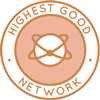 One Community is pioneering global zonal master planning through open source Highest Good Network® software that is a web-based application for collaboration, time tracking, and objective data collection. The purpose of the Highest Good Network is to provide software for internal operations and external cooperation. It is being designed for global use in support of the different countries and communities replicating the One Community sustainable village models and related components.
One Community is pioneering global zonal master planning through open source Highest Good Network® software that is a web-based application for collaboration, time tracking, and objective data collection. The purpose of the Highest Good Network is to provide software for internal operations and external cooperation. It is being designed for global use in support of the different countries and communities replicating the One Community sustainable village models and related components.
This week, the core team continued their work on the Highest Good Network PRs testing, confirming the fixed PRs and resolving several issues. Fixed PRs included preventing volunteers from reviewing their tasks (PR 2541), making the filtering data UI more user-friendly (PR 2636), adding a search option for names on the Leaderboard (PR 2597), and resolving a white screen issue when accessing team information from the Report page (PR 2468). Issues that remain unresolved include email validation failure and the success message location (PR 2559), missing ‘i’ icons on the Weekly Summaries Reports page, disabling the ‘Assign Badge’ button unless a name is typed (PR 2539), new roles not showing up on the Permissions Management page (PR 2386), problems with assigning, editing, or deleting Blue Squares (PR 1016), replacing the Badge Assignment search function (PR 2539), enabling the ‘See All’ toggle for new team members when a team is created (PR 2412), a scrollbar issue on the Team Management page (PR 2492), and ensuring emails are sent to managers, admins, and owners when a team member is deactivated (PR 1033). They also recorded a video to document the unresolved issues. We continue to focus on pioneering global zonal master planning through iterative improvements and user-centric solutions. See the Highest Good Society and Highest Good Network pages for more on how this relates to pioneering global zonal master planning. The collage below shows some of their work.
ADMINISTRATION TEAM
The Administration Team’s summary, covering their work administrating and managing most of One Community’s ongoing process for pioneering global zonal master planning was managed by Sneka Vetriappan (Data Analyst) and includes Durgeshwari Naikwade (Data Analyst), Hritvik Mahajan (Data Analyst), Jessica Fairbanks (Administrative Assistant), Kishan Sivakumar (Administative Assistant and Software Team Manager), Michael Juma (Administrative Assistant), Mrudula Chavali (Administrative Assistant and Data Analyst), Olawunmi “Ola” Ijisesan (Administrative and Management Support), Rachna Malav (Data Analyst), Rahul Bavanandan (Data Analyst), Ratna Meena Shivakumar (Data Analyst and Admin), Riddhisha Chitwadgi (Administrative Assistant), Ruiqi Liu (Administrative Assistant), Saumit Chinchkhandi (Administrative Assistant and Software Engineer), T R Samarth Urs (Data Analyst), Venkat Reddy Mankala (Data Analyst and Team Administrator), Vibhav Chimatapu (Data Analyst/Admin Assistant), and Zuqi Li (Administrative Assistant and Economic Analyst). This week, Durgeshwari focused on creating LinkedIn posts and handled research for analytics and strategy. She also participated in interviews and provided feedback to new trainees. Hritvik reviewed the Step 4 document for new admins, created and scheduled content for Twitter, and managed GitHub tags and pull requests. Jessica handled routine administrative tasks, assessed another administrator’s work, and integrated Highest Good Food into small-scale organizations, contributing to pioneering global zonal master planning efforts. Kishan worked on the weekly update blog, optimized SEO pages, and began new admin tasks. Michael prepared summaries for the Reactonauts software development team, reviewed Dropbox accounts, and checked blogs for SEO compliance. Mrudula reviewed technical documentation, formatted documents, and worked on FAQ content for Aircrete Final Documentation. Ola managed social media scheduling and image clarity, provided feedback, and monitored training sessions. Rachna scheduled interviews, assigned SEO pages, and worked on her own SEO tasks. Rahul created Reddit posts for sustainable practices, reviewed HGN Software Development documentation, and ensured website updates. Ratna prepared the weekly summary and collages, scheduled posts, and updated SEO pages. Riddhisha reviewed training and SEO content, created collages, and organized Dropbox folders. Ruiqi completed the review process for the Code Crafted Team, ensured accurate blog publishing, and assisted with bio announcements, all while contributing to pioneering global zonal master planning initiatives. Saumit handled interviews, performed frontend testing, and communicated with developers to resolve issues. Sneka focused on reviewing SEO pages, providing feedback, and updating weekly summaries. Samarth managed a PR review team, provided feedback, and optimized blog posts. Venkat wrote the weekly summary report, refined social media analytics, and reviewed blog pages. Vibhav reviewed PR team work, optimized blogs, and enhanced SEO scores. Zuqi organized the Graphic Design Team’s summary, adjusted blogs, and completed SEO reviews. One Community’s model for pioneering global zonal master planning includes developing and maintaining a supportive administration team like this. You can see the work for the team in the image below, showcasing our commitment to pioneering global zonal master planning.
GRAPHIC DESIGN TEAM
The Graphic Design Team’s summary was managed by Zuqi Li (Administrative Assistant and Economic Analyst) and included Anusha Tariq (Graphic Designer), Junyuan Liu (Graphic Designer, UI/UX Designer), Jyotsna Venkatesh (Graphic Designer) and Menaka Deepak (Graphic Designer/ Art Director), covering their work on graphic designs for pioneering global zonal master planning. This week, Anusha edited images for a bio section, selecting appropriate backgrounds and modifying announcement images. After requesting approval and making necessary corrections, she uploaded the images to the website. Anusha also reviewed and adjusted SEO settings on the website, watched videos for accurate information, took screenshots, and organized work-related images in Dropbox. Additionally, she updated and reviewed website data to ensure accuracy. Junyuan refined the content of the event page for HGN Phase 3, specifically the homepage and comments page structure, considering their interaction. He also designed social media images, completing two and gathering resources for future designs. Jyotsna continued developing brand book guidelines, focusing on brand tone, voice, and guidelines for both digital and print mediums. She researched on brand guidelines from other companies, particularly in tone and voice. Menaka created and uploaded three social media images (A9, A16, and A62) with screenshots to Dropbox and Google Docs. She completed additional images (A7, two versions of A12, and A58) and uploaded them to the same platforms. Together, these efforts reflect a commitment to pioneering global zonal master planning and effective communication across all platforms. On September 14, she added three more social media images (two versions of A13 and A86) and later uploaded two versions of A62 and two versions each of A427, A422, and A344. Menaka also created a password for WordPress access and reviewed videos titled “Creating the Web Content for Announcements and Bios,” “Creating Bio Images for One Community,” and “Creating Announcement Images for One Community,” before starting work on bio images for Angela Yun-Jung and Vishavdeep Kaur. See the Highest Good Society pages for more on how this contributes to pioneering global zonal master planning. See the collage below to view some of their work.
ALPHA SOFTWARE DEVELOPMENT TEAM
The Alpha Team’s summary, covering their work on the Highest Good Network software was managed by Lin Khant Htel (Frontend Software Developer) and includes Anand Seshadri (Software Engineer), Carlos Gomez (Full-stack Software Developer), Jordy Corporan (Software Engineer), and Logeshwari Renu (Software Engineer). The Highest Good Network software is how we will manage and measure our processes for pioneering global zonal master planning across our social architecture, construction, production, and maintenance processes. This week, Lin reviewed and approved PR #1096, gaining familiarity with the codebase and unit testing, with all test cases passing. He also reviewed the weekly summaries, photos, and videos submitted by his Alpha team members. Anand addressed several tasks, starting with fixing color compatibility issues in Dark Mode on the Reports page for the Team Reports option and working on PR 2335, which involved resolving issues in the Add Task modal. These fixes included ensuring tasks could only be saved after clearing date field errors, applying Dark Mode styling to the day picker calendar, and addressing the Reset button and hover effect issues that impacted visibility. Carlos worked on improving the “Hours by Team Member” visualization in project reports and continued progress on the Anniversary Celebrated component by resolving credential setup issues with OAuth in Google Cloud and refactoring backend code for email functionalities. The email interface is nearly complete, with final adjustments pending. Jordy made progress on unit tests for the emailController, writing tests for multiple functions but facing blockers with the addNonHgnEmailSubscriptionFirst function, continuing to work on solutions for this complex part of the controller. This initiative is part of our broader goal of pioneering global zonal master planning, enhancing project reporting and communication across teams. Logeshwari improved the loading speed of the Weekly Summaries Report page, submitting PR #2661 for review, and began work on adding an Active/Inactive toggle for teams, implementing the toggleActiveStatus function and linking it to a status indicator that displays green for active users and gray for inactive ones. See the Highest Good Society and Highest Good Network pages for more on how this relates to pioneering global zonal master planning. View some of the team’s work in the collage below.
BINARY BRIGADE SOFTWARE DEVELOPMENT TEAM
The Binary Brigade Team’s summary overseeing advancements in the Highest Good Network software was managed by Vijay Anand Pandian (Full Stack Software Engineer) and includes Aaryaneil Nimbalkar (Software Developer), Aditya Sure (Software Engineer), Deepthi Kannan (Software Engineer), Huijie Liu (Software Engineer), Peizhou Zhang (Software Engineer), Sri Sudersan Thopey Ganesh (Software Engineer), Sriram Seelamneni (Software Engineer) and Vigneshwar Muriki (Software Engineer). The Highest Good Network software is how we’ll be managing and objectively measuring our process for pioneering global zonal master planning through our social architecture, construction, production, and maintenance processes.
Aaryaneil focused on fixing unit tests based on feedback from the pull request review. Several pull requests were also reviewed, including Manikrishna’s fix for the alert visibility issue in dark and light modes (#2657), Parthj’s unit tests for the task controller (#1096), Ivy’s reasonSche unit test (#1089), Ivy’s InformationController unit test with error handling (#887), and Huijie’s fix for editing start and end dates (#2655, #1092). Additionally, Aaryaneil worked on addressing issues in the pull request for the AddTeamsAutoComplete unit tests. Throughout this process, Aaryaneil demonstrated a commitment to pioneering global zonal master planning by ensuring robust testing practices. Aditya worked on the HGN Software Development project, collaborating with a fellow volunteer to refine code and address questions. Key tasks included resolving bugs and optimizing code, with particular attention to enhancing the bell notification system for tracking task completion at 50%, 75%, and 90% milestones. Multiple bugs were identified in various pull requests, prompting efforts to fix these issues across different development areas. The primary focus was on improving functionality and refining the existing codebase, while also pioneering global zonal master planning to ensure efficient project execution.
Deepthi worked on fixing a badge assignment UI issue where the `Autosuggest` dropdown caused the layout to shift, moving the “last name” input out of alignment. The initial solution involved using Flexbox to align the inputs horizontally and applying `position: relative` to the parent container and `position: absolute` to the dropdown. Despite these adjustments, the dropdown continued to affect the layout, so Deepthi enforced `position: absolute !important` in the CSS and verified that no parent containers had conflicting `overflow` properties, showcasing her skills in pioneering global zonal master planning through meticulous layout management. Huijie proposed solutions to address the Azure time limit issue in a previous pull request, including sending keep-alive messages and testing an asynchronous process pattern. She also worked on fixing bugs related to editing and deleting lost hours entries, as well as resolving cases where empty user data fields caused problems. Peizhou worked on solving the issue of dismissing multiple blue squares will bringing them back, and sending blue square emails to the users. He tried to locate the code that caused the issue and tried to solve it, demonstrating a commitment to pioneering global zonal master planning within the project.
Sri refactored the blue square stats component (donut chart) to fix an issue with the legend being cut off on the right and ensured the component was fully responsive. He reviewed PR 2676 and requested changes, suggesting improvements to the suggestion list’s CSS by limiting it to the end of the search bar for a better user experience. Sri also noted an issue with fetchSuggestions and recommended abstracting the function to prevent unnecessary re-renders. Sriram, a new member of the development team, addressed several issues with the project archive functionality. He resolved two main problems: the ‘Set Inactive’ button, which previously caused the UI to break and prevented further interactions without reloading the page, and the ‘Confirm’ button, which was not archiving the project as intended. To fix these issues, Sriram refactored the related code from the Projects component to the Project component for improved abstraction and adjusted the associated tests. He pushed his changes to a new branch and created a pull request. Additionally, he re-reviewed pull requests 2620 and 2642 from the previous week, all while contributing to pioneering global zonal master planning efforts within the team.
Vigneshwar wrote a unit test for the `getProjectReport` Redux action using `redux-mock-store` and `Jest`. The test simulates the behavior of Redux when dispatching asynchronous actions, with `thunk` middleware managing the async flow. The test mocks the actions `getProjectDetail`, `fetchAllMembers`, and `fetchAllWBS` to isolate the behavior of `getProjectReport` and ensure that these dependencies are called with the correct parameters. The test confirms that the `getProjectReport` function dispatches actions in the correct order, starting with `GET_PROJECT_REPORT_BEGIN`, then calling the necessary actions, and finally dispatching `GET_PROJECT_REPORT_END` to conclude the report-fetching process, thereby supporting pioneering global zonal master planning efforts. Vijay focused on fixing UI issues within the HGN Software Development project. He worked on various UI components mounted on the dashboard, addressing layout and display problems for screen sizes starting at 375px and up. He also completed a fix for the tooltip issue associated with the “i” icon in the Tasks and Timelogs component, ensuring proper functionality. In addition, he continued to work on resolving multiple UI issues across the dashboard and its components, making improvements to ensure a better user interface. See the Highest Good Society and Highest Good Network pages for more on how this relates to pioneering global zonal master planning. View some of the team’s work in the collage below.
BLUE STEEL SOFTWARE DEVELOPMENT TEAM
The Blue Steel Team’s summary, presenting their work on the Highest Good Network software was managed by Jingyi Jia (Software Engineer, Team Manager), and includes Parth Rasu Jangid (Software Developer), Ramakrishna Aruva (Software Engineer), and Vishavdeep Kaur (Full stack Developer). The Highest Good Network software is how we’ll be managing and objectively measuring our process for pioneering global zonal master planning through our social architecture, construction, production, and maintenance processes. This week, Vishavdeep was involved in the review process, where he approved several pull requests”PR-2652, PR-2650, PR-2649, PR-2648, PR-2647, PR-2517, PR-2535, PR-2480, PR-2670, and PR-2656″attaching comments and screenshots for documentation and further reference. Additionally, he ensured that all necessary screenshot videos were added to the GitHub repository. Parth focused on unit testing and the resolution of pull requests. He reviewed multiple pull requests, specifically 1984+765, 2535, 2611, and 2656, and created a new pull request 1096 for the taskController.js. He also resolved merge conflicts in his open pull requests and verified the success of GitHub workflow-based tests. Meanwhile, Ramakrishna finalized the conversion of all methods into ES6 functional equivalents and began enhancing the application’s functionality and type safety by incorporating PropTypes and implementing Redux `mapStateToProps`. His efforts extended to optimizing the destructuring of states into individual components. See the Highest Good Society and the Highest Good Network pages to learn more on how their work contributes to pioneering global zonal master planning. See below to view images of their work.
CODE CRAFTERS SOFTWARE DEVELOPMENT TEAM
The Code Crafters Team’s summary, covering their work on the Highest Good Network software, was managed by Summit Kaushal (Backend Software Developer) and includes Ambika Kabra (Software Engineer), Chetan Sunku (Software Engineer), Niketha Anand (Software Engineer), Pavan Swaroop Lebakula (Software Engineer), Xiaoyu (Ivy) Chen (Software Engineer), and Yashwanth Pokala (Software Engineer). The Highest Good Network software is how we’ll manage and objectively measure our process for pioneering global zonal master planning through our social architecture, construction, production, and maintenance processes.
This week, Ivy focused on resolving issues and improving functionality across multiple areas, addressing problems related to the “isSet” email template and user profile bugs. Mobile issues were resolved, including multi-select sizing and slider positioning. A new unit test error related to pop-ups was identified, and she worked on handling the “isSet” condition for users approaching their final day. Fixes were made, and a video was recorded to demonstrate two methods for checking final-day work. Ivy also addressed conflicts in chart visualization, the information controller, and bar chart pull requests, while reviewing the remaining “isSet” issues in the Bug Doc. Her efforts in refining these elements contribute to pioneering global zonal master planning, ensuring a cohesive user experience across the platform. Ambika worked on improving the tasks contributed section of the People Reports page and implemented PR 2651. She added permission checks for user management buttons, including ‘Delete User’ and ‘Pause,’ and resolved failing test cases. She continued this work on additional buttons like ‘User Status’ and ‘Set Final Day,’ incorporated review comments for dark mode on the People Reports page, and resubmitted PR 2651. Ambika also assisted Jae in identifying a bug where users with “invisible” status could no longer see others on the leaderboard, tracked down the responsible PR, and prepared PR 2674 for review after completing test cases for the buttons, showcasing her commitment to pioneering global zonal master planning through meticulous attention to detail and collaboration.
Niketha worked on loading data into the project table, ensuring all fields were populated except for the category field, which remained unresolved with a non-editable dropdown while determining whether the category should be edited directly from the table. Pavan fixed the font color in the dashboard, tested the solution, and raised a pull request. He also claimed two bugs: adjusting formatting in the “Edit Task” section to reduce vertical space and fixing a date selector issue for Mac devices. Summit reviewed management-related documents, sent Slack messages, and assisted a team member with debugging their code. They worked on debugging badge-related issues, identifying a potential solution, and integrating a table within the popup/hover functionality. Yashwanth joined the development team, was assigned a hotfix and bug, and familiarized himself with the codebase. He created a branch for the hotfix, submitted PR #2675, and worked on fixing an error in the password update function with the task nearly complete and awaiting supervisor review. This collaborative effort exemplifies their commitment to pioneering global zonal master planning within the project. Chetan worked on a bug related to the time log functionality. The issue occurs when a task is selected and time is logged for that specific task, but the logged time does not automatically update in the dashboard as expected. Instead, the time remains unchanged until a manual page reload is performed. He focused on finding a solution to fix this issue and ensuring proper time updates. See the Highest Good Society and Highest Good Network pages for more on how this relates to pioneering global zonal master planning. The collage below shows some of this work.
DEV DYNASTY SOFTWARE DEVELOPMENT TEAM
The Dev Dynasty Team’s summary, covering their work on the Highest Good Network software, was managed by Harsh Bodgal (Software Engineer) and includes Ajay Kumar Reddy (Software Engineer), Howie Miao (Software Engineer), Jatin Agrawal (Software Engineer), Manikrishna Sanganabatla (Software Engineer), Nandini Yelmela (Software Engineer), and Sailavanya Narthu (Volunteer Software Engineer). The Highest Good Network software is how we’ll manage and objectively measure our process for pioneering global zonal master planning through our social architecture, construction, production, and maintenance processes. Harsh focused on understanding managerial duties, assisted a teammate in resolving UI bug #2505, and improved the document for setting up HGNApp locally by refining its structure and language. He also addressed initial setup errors and provided guidance to a new teammate on tasks and component structure. Ajay approved 12 PRs before transitioning to the dev team and worked on enhancing the “Search” feature for person names on the projects page, developing a backend endpoint and integrating it with the frontend to filter and display associated projects. Sailavanya resolved a CI build failure caused by an “Unauthorized request” error during API calls, handled merge conflicts, and addressed ongoing authentication issues. She confirmed compatibility with Node.js version 14.21.3 and sought team guidance on API authorization to ensure successful CI checks. Nandini focused on resolving a dark mode styling issue for the “Weekly Committed Hours By Member” label, which was not displaying correctly due to conflicting CSS. After applying the correct className, the label now renders properly in both dark and light modes. In line with our commitment to pioneering global zonal master planning, Manikrishna fixed a bug affecting alert message visibility in dark mode during badge assignments, updated incorrect message text, and resolved a Node 14 CLI test failure during GitHub Actions reruns. He also reviewed and tested multiple PRs to ensure successful builds. Howie resolved visibility and testing errors related to an older pull request and finalized a bug fix for owner permission table logs before preparing for his new role as assistant manager. Jatin created a function to send emails to users who completed hours but did not submit summaries, setting up a cron job to run every Sunday at 4 AM and submitted a backend PR for this task. See the Highest Good Society and Highest Good Network pages for more on how this relates to pioneering global zonal master planning. Below is a collage for the team’s work.
EXPRESSERS SOFTWARE DEVELOPMENT TEAM
The Expressers Team’s summary, covering their work on the Highest Good Network software, was managed by Christy Guo (Software Engineer) and includes Faye Lyu (Software Engineer), Mohammad Abbas (Software Engineer), and Reina Takahara (Software Developer). The Highest Good Network software is how we’ll manage and objectively measure our process for pioneering global zonal master planning through our social architecture, construction, production, and maintenance processes. This week, Christy reviewed several PRs to ensure that all related tests and functionalities were working as expected. The PRs reviewed included #1052 for unit tests and integration tests for the time zone API controller, #2670 for the color generator unit test, #2672 for the pie chart unit test, and #2678 for the dashboard table text and UI color fix. PR #2647 addressed the profile team code dropdown, #2679 involved WBS table UI changes for task and action columns, and #1096 covered unit tests for the task controller. Faye focused on integrating a date picker into the TotalOrgSummary page, resolving layout and code consistency issues, and creating the “Weekly Volunteer Summary” component. Mohammad refined the badge hours frontend, improving functionality, and managing the state. Reina worked on understanding permissions and toast error messaging, merged two PRs into one, and debugged test cases in the development branch. See the Highest Good Society and Highest Good Network pages for more on how this relates to pioneering global zonal master planning. See the collage below to view the team’s work this week.
MOONFALL SOFTWARE DEVELOPMENT TEAM
The Moonfall Team’s summary, covering their work on the Highest Good Network software was managed by Anne Zhang (Software Engineer) and includes Lu Wang (Software Engineer), Satya Shanthi Tadiparthi (Software Engineer), Shefali Mittal (Software Engineer), Shrada Chellasami (Software Engineer), Swathi Dharma Sankaran (Software Engineer), Vedant Gandhi (Software Engineer), and Yili Sun (Software Engineer). The Highest Good Network software is how we’ll be managing and objectively measuring our process for pioneering global zonal master planning across our social architecture, construction, production, and maintenance processes. Anne researched two frontend styling bugs related to text line spacing in the task and sub-sub task columns. Satya continued with the Manager-in-Training program and resolved a UI bug by adjusting column widths in a table, submitting a pull request for the fix. Shefali added two test cases for the ColorGenerator, four for the PieChart, and created unit test cases for `PeopleReport/selectors.js`, addressing any failed cases. Shrada fixed the Member Column filter to order projects by active members and added mouseover text to explain the filter’s functionality, while also working on her company bio. Swathi worked on improving the task dropdown UI by refactoring the layout and spacing of buttons and began addressing a bug to prioritize paused tasks in the table. Vedant reviewed two pull requests, reconfigured ESLint and Prettier to address formatting issues, and worked on adding a reset filter button for badge data, submitting a pull request for this update. Yili focused on fixing the “Active” column filter in the Tasks feature by testing bugs and analyzing filter interactions with data, with ongoing work to resolve the identified issues. Lu concentrated on unit tests for the `PeopleTasksPieChart.jsx` component, expanded test cases, and reviewed her team’s work as part of her responsibilities. See the Highest Good Society and Highest Good Network pages for more on how this relates to pioneering global zonal master planning. Below is a collage for the team’s work.
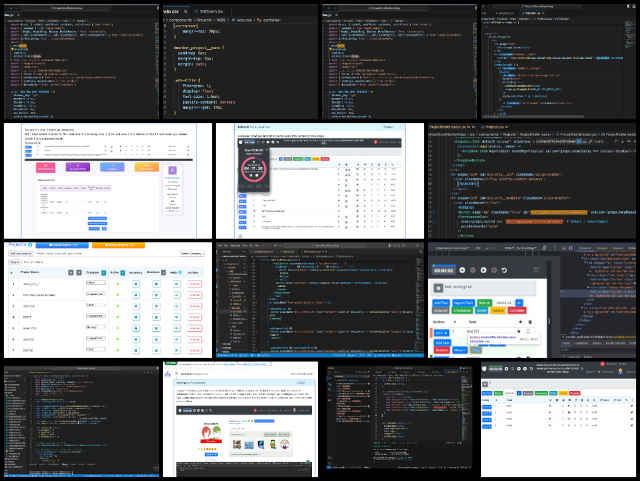
REACTONAUTS SOFTWARE DEVELOPMENT TEAM
The Reactonauts Team’s summary, covering their work on the Highest Good Network software, was managed by Changhao Li (Software Engineer). It included Aishwarya Ramesh (Software Engineer), Dhairya Mehta (Software Engineer), Haoyue Wen (Software Engineer), Gmon Kuzhiyanikkal (Software Engineer), Jinxiong You (Software Developer), Nikhil Pittala (Software Engineer), Peterson Rodrigues dos Santos (Full-Stack MERN Stack Developer), Vijeth Venkatesha (Full Stack Developer), and Yash Agrawal (Software Engineer). The Highest Good Network software is how we’ll be pioneering global zonal master planning across social architecture, construction, production, and maintenance processes. This week, Aishwarya completed the showtrophyicon functionality, addressing both frontend and backend logic, and resolved API call errors that affected the user interface, ensuring successful deployment.
Changhao worked on unit test development, managed the software development team, assisted with development-related issues, finalized setups and testing for `timeentry.jsx`, and updated unit tests requiring further local adjustments. He also hosted the weekly team meeting, organized a team folder for uploading photos and videos, monitored time logs, and assigned times for teammates to continue unfinished tasks. Additionally, Changhao incorporated global zonal master planning into the project to enhance its strategic alignment. Dhairya focused on the “Fix Projects find user function” task, identifying the root cause of user discovery issues and implementing a sort and search function to improve assignment processes.
Moreover, Gmon resolved a bug related to task dropdowns on the Projects Reports page, enhanced task viewing with a comma-separated format, and created pull request 2609 with relevant media uploaded to Dropbox. Haoyue worked on the Quick Setup Tool, enhancing title summaries, adding a “Title Code” field, and testing functionality with up to 30 titles. Jinxiong reviewed five pull requests, fixed unit tests, and UI text, and addressed UI bugs within the HGN Apps. Nikhil completed 12 pull requests involving frontend, and backend tasks, unit testing, and bug resolution, contributing to system stability and pioneering global zonal master planning.
In addition, Peterson implemented a 404 error page for invalid URLs with redirection to the dashboard or login page. Vijeth managed team-related tasks, and reviewed bugs in Phases 1 and 2, ensuring no duplication in bug reports. Yash addressed two pull requests related to the Bidding Engine, adding Controllers, Routes, and Routers while resolving integration errors for seamless functionality. See the Highest Good Society and Highest Good Network pages for more information on how this relates to pioneering global zonal master planning. See the collage below for the team’s work this week.
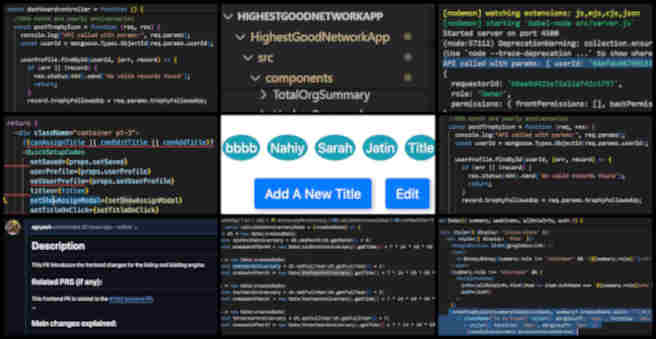
SKYE SOFTWARE DEVELOPMENT TEAM
The Skye Team’s summary covering their work on the Highest Good Network software was managed by Luis Arevalo (Software Engineer), and includes Abi Liu (Software Developer), Angela Cheng (Full Stack Developer), Kyrene Flores (Software Engineer), Gowtham Dongari (Software Engineer), and Sai Preetham Dongari (Full Stack Developer). The Highest Good Network software manages and pioneering global zonal master planning on social architecture, construction, production, and maintenance processes. This week, Sai worked on the Permissions Management page of the HGN Software Development project (PR 2309), adding a reminder to save changes modal, addressing a text and button alignment issue caused by improper text wrapping and Flexbox settings, and adjusting the logic in the permission list item file to ensure compatibility for different screen sizes, updating relevant CSS classes for proper alignment and text wrapping across mobile and larger screens, testing these changes on multiple devices, and documenting the process. Abi added comparison data for total badges awarded, total active teams, and task statistics queries with an optional comparison time period, updating the documentation to reflect these changes. Kyrene resolved a bug displaying admin links using quick team buttons on the user profile page by implementing error handling for Google links, allowing the form to submit and render, though it returned a “bad request” error for the PUT request, which she suspects may be due to permission issues. This work contributes to our efforts in pioneering global zonal master planning, enhancing user experience and accessibility across the platform. Gowtham addressed a TeamLocation Search Error in the HGN Software Development project, updating the search function to ensure missing location data was accurately reflected in user profiles, and he documented these updates with dropbox videos. Luis worked on sending email notifications for third and fourth warnings, consulting with Jae, implementing features like disabling five current warnings, and ensuring the current user’s name is included in warning emails, while also developing a plan to hide certain warning features and outlining a strategy for notifying the manager of the member. See the Highest Good Society and Highest Good Network pages for more on how this relates to growing the pioneering global zonal master planning. See the collage below for the team’s work this week.
SOFTWARE PR REVIEW TEAM A-H
The PR Review Team’s summaries for team members’ names starting with A-I and covering their work on the Highest Good Network software was managed by Vibhav Chimatapu (Data Analyst/Admin Assistant). The Highest Good Network software is a foundation of what we’ll be using to measure our results for pioneering global zonal master planning. This week’s active members of this team were: Abdelmounaim Lallouache (Software Developer), Abhinav Ankur (Software Engineer), Ashay Kalpesh Mehta (Software Engineer), Calvin Liu (Full-Stack Software Engineer), Carl Bebli (Software Engineer), Crystal Low (Software Engineer), Dhrumil Shah (Software Engineer), and Geeta Matkar (Software Engineer). They reviewed all the Highest Good Network PRs (Pull Requests) shared in this week’s update. Learn more about how the Highest Good Network will measure and assist in pioneering global zonal master planning in the Highest Good Network open source hub. The collage below shows a compilation of the work from this team.
SOFTWARE PR REVIEW TEAM I-N
The PR Review Team’s summary for team members’ names starting with I-N and covering their work on the Highest Good Network software was managed by Saumit Chinchkhandi (Administrative Assistant and Software Engineer). The Highest Good Network software is a foundation of what we’ll be using to measure our results of pioneering global zonal master planning. This week’s active members of this team were: Ishan Goel (Software Engineer), Kurtis Ivey (Software Engineer), Mohan Gopi Gadde (Software Engineer), Muzammil Mohammed (Software Engineer), Nathan Hoffman (Software Engineer), Navya Sri Ankireddy (Software Engineer), Nikita Kolla (Full Stack Developer), and Nishita Gudiniye (Software Engineer). They reviewed all the Highest Good Network PRs (Pull Requests) shared in this week’s update. Learn more about how the Highest Good Network will measure and assist in pioneering global zonal master planning in the Highest Good Network open source hub. The collage below shows a compilation of the work from this team.
SOFTWARE PR REVIEW TEAM R-Sa
The PR Review Team’s summary for team members’ names starting with R-Sa and covering their work on the Highest Good Network software was managed by Olawunmi “Ola” Ijisesan (Administrative and Management Support) and Mrudula Chavali (Administrative Assistant and Data Analyst). The Highest Good Network software is a foundation of what we’ll be using to measure our results of pioneering global zonal master planning. This week’s active members of this team were: Rishitha Mamidala (Software Developer), Sai Venkatesh Voruganti (Volunteer Software Engineer), Saniya Farheen (Software Engineer), Shreya Vithala (Software Engineer), Shuddhendu Mishra (Software Engineer), Saurabh Shetty (Software Engineer), Sankara Narayanan Rajagopal (Software Engineer). They reviewed all the Highest Good Network PRs (Pull Requests) shared in this week’s update. Learn more about how the Highest Good Network will measure and assist in pioneering global zonal master planning in the Highest Good Network open source hub. The collage below shows a compilation of the work from this team.
SOFTWARE PR REVIEW TEAM Si-Z
The PR Review Team’s summary for team members’ names starting with Si-Z and covering their work on the Highest Good Network software was managed by Olawunmi “Ola” Ijisesan (Administrative and Management Support) and Samarth Urs (Administrative Assistant and Data Analyst). The Highest Good Network software is a foundation of what we’ll be using to measure our results of pioneering global zonal master planning. This week’s active members of this team were: Snehal Dilip Patare (Software Engineer), Strallia Chao (Software Engineer), Swaroop Udgaonkar (Software Engineer), Tharunaa Shoban Babu (Software Engineer), Neeharika Koniki (Software Engineer, Developer), Viraj Panchal (Software Engineer), Vishnu Priya Atheti (Software Engineer), and Yiyun Tan (Software Engineer). They reviewed all the Highest Good Network PRs (Pull Requests) shared in this week’s update. Learn more about how the Highest Good Network will measure and assist in pioneering global zonal master planning in the Highest Good Network open source hub. The collage below shows a compilation of the work from this team.
AND WE PRODUCED THIS WEEKLY UPDATES BLOG – CLICK HERE TO SUBSCRIBE
FOLLOW ONE COMMUNITY’S PROGRESS (click icons for our pages)
INVESTOR PAGES
GET INVOLVED
DONATE | WAYS ANYONE CAN HELP | MEMBERSHIP
CLICK HERE FOR ALL PAST UPDATES———-
 One Community
One Community